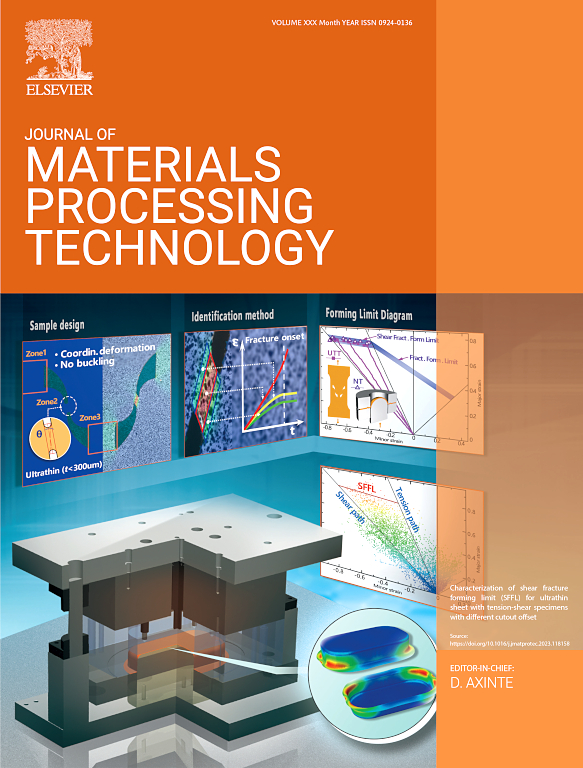Liquid bridged deposition for 3D shaping
IF 6.7
2区 材料科学
Q1 ENGINEERING, INDUSTRIAL
Journal of Materials Processing Technology
Pub Date : 2025-03-19
DOI:10.1016/j.jmatprotec.2025.118820
引用次数: 0
Abstract
Additive manufacturing has emerged as a vital technology for fabricating three-dimensional (3D) structures. However, in many cutting-edge applications, creating sophisticated 3D metallic structures with high surface quality and precision is required, which remains a significant challenge. Here we developed the liquid bridge-constrained electrodeposition for 3D shaping. Leveraging the discontinuous dewetting of wettability contrast pattern, the catenoid-like liquid bridge was spontaneously formed between the electrolyte pool and the surface plate. The liquid bridge serves a tunnel, to effectively confine the deposition and enable precision growth of 3D curved structures. The generated umbrella-shaped structure exhibits a base diameter of 0.4 mm, a maximum width of 1.0 mm, and achieves an aspect ratio of 0.6, with its sidewall profile perfectly conforming to the catenary equation. Furthermore, these structures have fine surface quality while exhibiting hardness comparable to those of pure copper. Notably, leveraging engineered wettability patterns enables scalable fabrication of 3 × 3 arrayed 3D structures, demonstrating that utilizing liquid bridge electrodeposition to achieve bulk fabrication is readily feasible. This method simultaneously considers the manufacturing requirements of 3D complexity, accuracy, scalability and discontinuous dewetting, which holds promise for applications ranging from heat transfer, microfluidic and electronic devices where 3D shaping of exquisite structures matters.
求助全文
约1分钟内获得全文
求助全文
来源期刊

Journal of Materials Processing Technology
工程技术-材料科学:综合
CiteScore
12.60
自引率
4.80%
发文量
403
审稿时长
29 days
期刊介绍:
The Journal of Materials Processing Technology covers the processing techniques used in manufacturing components from metals and other materials. The journal aims to publish full research papers of original, significant and rigorous work and so to contribute to increased production efficiency and improved component performance.
Areas of interest to the journal include:
• Casting, forming and machining
• Additive processing and joining technologies
• The evolution of material properties under the specific conditions met in manufacturing processes
• Surface engineering when it relates specifically to a manufacturing process
• Design and behavior of equipment and tools.
 求助内容:
求助内容: 应助结果提醒方式:
应助结果提醒方式:


